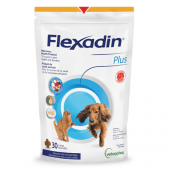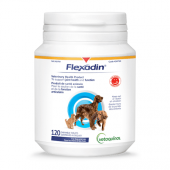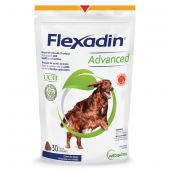To avoid appearing vulnerable to potential predators, cats instinctively tend to hide their pain. This natural behaviour can make it more difficult for veterinary health professionals to accurately assess and treat the pain. Veterinarians from the Université de Montréal’s Faculty of Veterinary Medicine have a developed a fast, reliable and simple tool to better do so: the Feline Grimace Scale.
Scientific research on cat pain
With signed consent from their owners, cats admitted to the Université de Montréal’s Veterinary Teaching Hospital were evaluated, filmed and given analgesics if found to be in pain. Treatment and care was provided and no animals were harmed during the study. Images of painful and pain-free cats were then compared to identify differences in facial expressions, called action units. Rigorous scientific methods were applied to validate the research’s conclusions.
5 action units of cat pain
Pain can be observed on a cat’s face in five different ways and assessed as being either absent, mild, moderate or severe:
- Ear position: Ears facing forward are a sign of a pain-free cat. Being slightly pulled part may indicate mild to moderate pain. If flattened and rotated outwards, pain could be severe.
- Orbital tightening: Without pain, a cat’s eyes are fully open. As pain increases, a cat may progressively close them or squint.
- Muzzle tension: By default, the muzzle should be relaxed and in a round shape. When experiencing pain, it becomes increasingly tense and may take an elliptical shape.
- Whiskers position: Loose and curved whiskers indicate an absence of pain, and they straighten and move away from the face as pain increases.
- Head position: When standing or sitting, a pain-free cat tends to keep their head above the shoulder line. They lower their head as they experience pain, and may tilt their chin towards their chest.
A short training manual can be downloaded for free on the Feline Grimace Scale website.
Assessing cat pain on a scale of 0 to 10
To assess pain, a cat should be observed for 30 seconds when not sleeping, grooming itself, eating or vocalizing. Using reference visuals, each of the five action units is assigned a score of 0 (absent), 1 (moderately present or uncertain) or 2 (obvious). The total score out of 10 is designed to help veterinarians make clinic decisions. For example, past a set “cut-off” point (such as a score equal to or greater than 4), they may administer analgesics to ease the animal’s suffering.
About the Feline Grimace Scale team
The Feline Grimace Scale was developed by the Steagall Laboratory, a team of veterinarians at the Université de Montréal which studies naturally occurring, spontaneous pain in animals, particularly cats. The laboratory is headed by Paulo Steagall, a world-renowned researcher, author, speaker and editor of the practical guide Feline Anesthesia and Pain.






